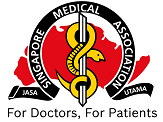General practitioners' knowledge of hand surgery in Singapore: a survey study
Share this Article
Singapore Med J 2012; 53(8): 522-525
General practitioners' knowledge of hand surgery in Singapore: a survey study
×
![]()
Prevalence of cardiovascular risk factors among healthcare staff in a large healthcare institution in Singapore
Share this Article
Singapore Med J 2012; 53(8): 517-521
Prevalence of cardiovascular risk factors among healthcare staff in a large healthcare institution in Singapore
×
![]()
Incidence of non-tunnelled central venous catheter-related infections in oncologic patients receiving chemotherapy in an outpatient setting
Share this Article
Singapore Med J 2012; 53(8): 513-516
Incidence of non-tunnelled central venous catheter-related infections in oncologic patients receiving chemotherapy in an outpatient setting
×
![]()
Comparison of fasting blood sugar and serum lipid profile changes after treatment with atypical antipsychotics olanzapine and risperidone
Share this Article
Singapore Med J 2012; 53(7):488-492
Comparison of fasting blood sugar and serum lipid profile changes after treatment with atypical antipsychotics olanzapine and risperidone
×
![]()
Interpersonal problems among psychiatric outpatients and non-clinical samples
Share this Article
Singapore Med J 2012; 53(7):481-487
Interpersonal problems among psychiatric outpatients and non-clinical samples
×
![]()
Evaluation of adherence and depression among patients on peritoneal dialysis
Share this Article
Singapore Med J 2012; 53(7):474-480
Evaluation of adherence and depression among patients on peritoneal dialysis
×
![]()
Prevalence of depression among women attending a primary urban care clinic in Malaysia
Share this Article
Singapore Med J 2012; 53(7):468-473
Prevalence of depression among women attending a primary urban care clinic in Malaysia
×
![]()
First presentation psychosis among the elderly in Singapore
Share this Article
Singapore Med J 2012; 53(7):463-467
First presentation psychosis among the elderly in Singapore
×
![]()
The Modified Mini-Mental State Examination test: normative data for Singapore Chinese older adults and its performance in detecting early cognitive impairment
Share this Article
Singapore Med J 2012; 53(7):458-462
The Modified Mini-Mental State Examination test: normative data for Singapore Chinese older adults and its performance in detecting early cognitive impairment
×
![]()
Stigma and restriction on the social life of families of children with intellectual disabilities in Vietnam
Share this Article
Singapore Med J 2012; 53(7):451-457
Stigma and restriction on the social life of families of children with intellectual disabilities in Vietnam
×
![]()


